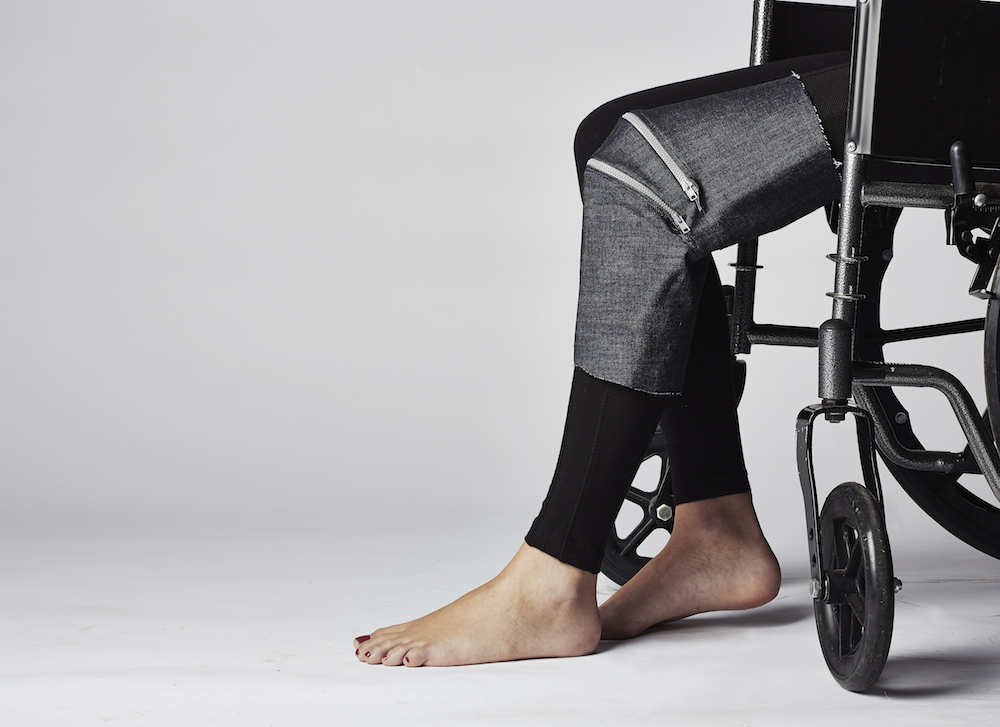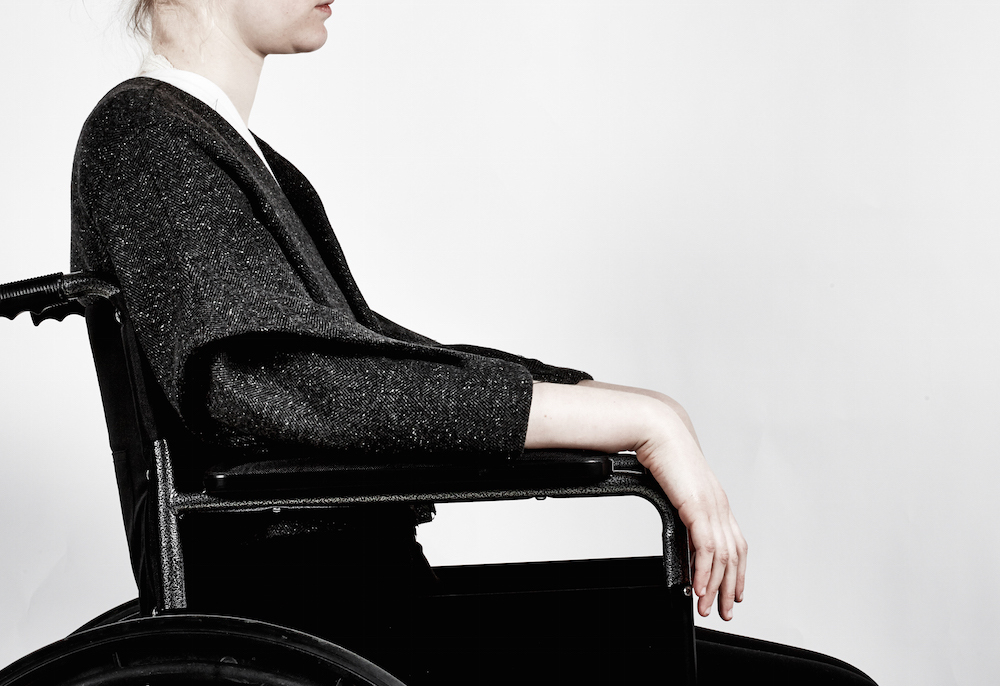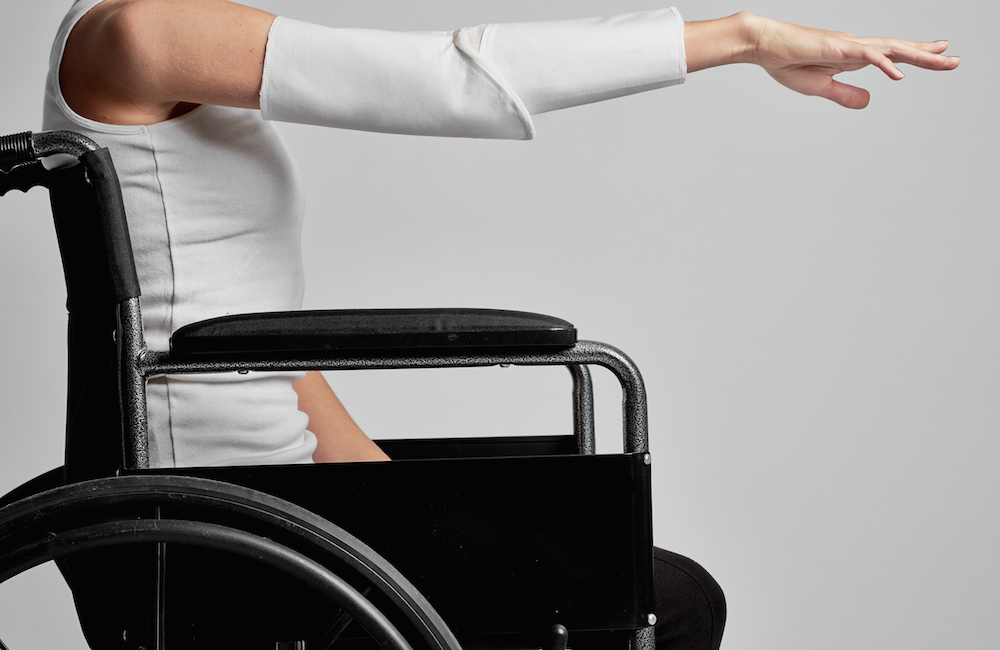Wales native and recent Parsons grad Lucy Jones makes beautifully avant-garde clothing for people in wheelchairs. Think minimalist designs in the style of early Helmut Lang with modular components for mobily challenged needs. After winning several prizes, including Parsons’s Womenswear Designer of the Year award, Jones has people in the style, tech, and health industries excited to see what she’ll do next. We wanted to find out how she came up with such a boundary-pushing collection.

How did you first become interested in fashion?
I’ve known for a very long time that I wanted to study fashion. I used to do performances in school and I was far more interested in what I’d be wearing on the stage! I was really interested in fashion and style, and then when I came to Parsons, I of course learned a lot more about what fashion really was.
Who have some of your biggest influences been?
When I was in Wales, my first proper fashion exhibit that I saw was 30 years of Japanese Fashion, and when I saw Issey Miyake’s work, I was just blown away. That spoke to me of what fashion really was, the innovation and his pattern-cutting. I’m interested in the technical side [of fashion] and that still speaks to me to this day. I’m obsessed with innovation in technology and where fashion has the potential to go.

So do you follow technology as much as you follow fashion?
Oh, yeah, I’m such a geek for that! I love MIT, I’m always looking at anything they’re doing…I love the idea of multidisciplinary design, like fashion designers working with engineers and industrial designers.
How did the idea to design for seated individuals come about?
I was in this class called Design Communication, and I was asked to design a project that would change the world. I asked my cousin, Jake [who has a condition called hemiplegia that has disabled his left side but he does not use a wheelchair] how he dressed himself. He said “Oh, well, my mum helps me.” I couldn’t believe it because I’ve seen him do so many things with one hand. There was one sentence that I think changed my whole opinion on fashion’s power for change. I asked him what it would mean to him to have a pair of trousers he could do up with one hand, and he said, “It would be the next step up from not being disabled.” And I thought it was crazy that clothes could do that.

What was the process like designing the full collection?
I arranged interviews and focus groups to hear from people what they wanted, what their problems were, and how I could solve them. I realized there were so many issues involved with functionality and how to get clothes on and off, I had to focus on just one thing. So I decided to focused on seated bodies, people who are self-propelling. I promised I would start with this area and keep expanding, adding more disabilities as I go…To start this collection, I worked a lot with one individual, Ronnie. [I’d go] work at her apartment for hours and just talk about fashion. She didn’t realize that when she was speaking to me, she was helping me design just by talking.
How did you find that the individuals you spoke to viewed fashion and style?
The idea that they had of fashion is that it was a lot of complication for them, and they felt just not included in the industry. But most of them were super fashion-conscious, and really working with what they had, wishing there would be more options in place for them. When we go shopping, there are a million choices, but for them, there would only be these few options. You’ve got a petites section, and a maternity section – I think there should be a seated section, where you can buy the same looks from the same collections, just for seated individuals.

How does it feel to have gotten all of this recognition now, winning Parsons’s Womenswear Designer of the Year award, as well as Parsons and Kering’s Empowering Imagination Competition?
I can’t sum that up–I never considered winning anything. When I was doing it, I had so much love for the people I met while I was researching and working on this…I didn’t think the industry would truly grasp what I was trying to achieve with my work, so the fact that they did really made me feel so grateful.
Also, I had many e-mails from differently abled individuals saying, “Thank you for acknowledging me,” and I just thought, ‘Wow, this is crazy.’ My favorite part is that individuals who aren’t usually interested in fashion were interested in hearing about this. MIT, for example. There’s this Open Style Lab, which is a collaboration of engineers, occupational therapists and differently abled individuals–they’re people who I want to work with to see what we can change and what we can do

What are you working on now?
I’m working on some collaborations, and, fingers crossed, I’ll be working with MIT’s Open Style Lab. I received a grant from the New School and I’ll be working to develop different patterns that will be openly sourced so they can be downloaded online. As I expand the collection, I want my patterns to be able to be downloaded for free–I think that’s the way that people will collaborate and expand on my work.

Credits
Text Courtney Iseman
Photos courtesy Lucy Jones
